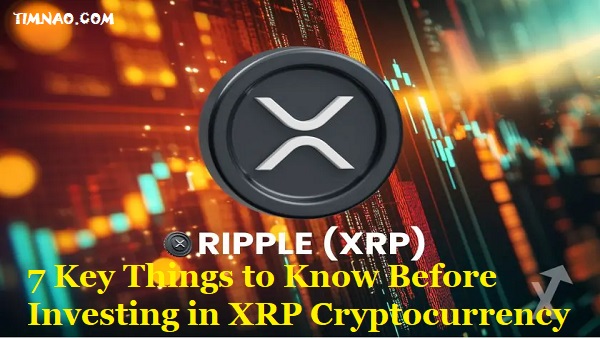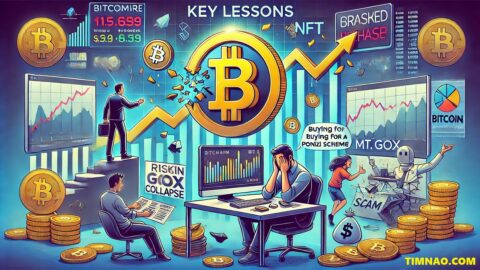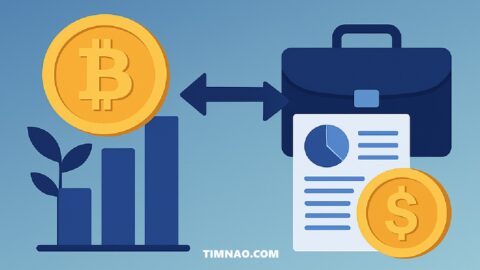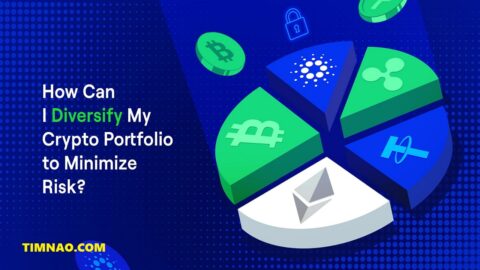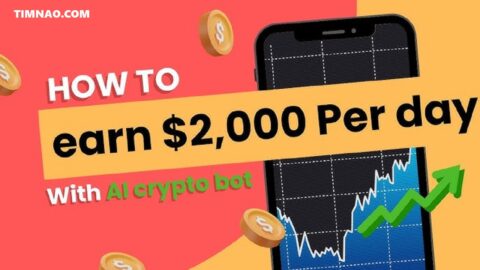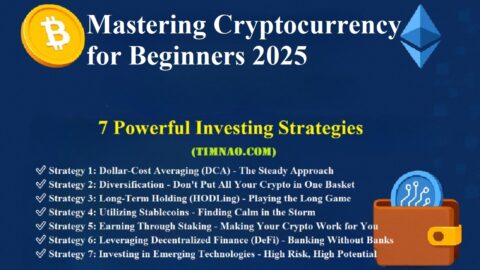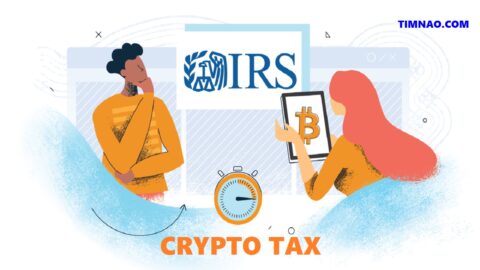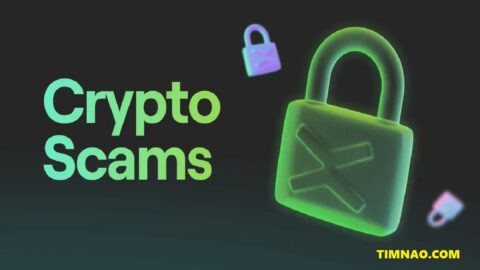Your Beginner-Friendly Guide to Ripple (XRP) is Here! 🚀
Hello, future crypto enthusiast! If you’ve been hearing buzzwords like “blockchain,” “cryptocurrency,” and specifically “Ripple” or “XRP,” you’ve come to the right place. The world of digital currencies can seem daunting at first, but it’s also incredibly exciting and full of potential. This comprehensive guide is designed specifically for beginners like you. We’ll break down everything you need to know about Ripple (XRP) in a simple, accessible way, avoiding confusing jargon and focusing on what truly matters.
Our goal is to take you from curious newcomer to someone who confidently understands what Ripple and XRP are all about, how they work, their potential in the financial world, and what you should consider if you’re thinking about dipping your toes into investing. We’ll be drawing on core concepts and enriching them with the latest insights and developments in the Ripple ecosystem as of mid-2025, ensuring you get a current and well-rounded perspective. Forget dry, textbook explanations; we’re aiming for a natural, flowing conversation that empowers you with knowledge.
So, grab a cup of your favorite beverage, get comfortable, and let’s embark on this journey of understanding XRP cryptocurrency together. By the end of this article, you’ll have a solid foundation in Ripple XRP for beginners and feel much more informed about the prospect of investing in Ripple.
📜 Table of Contents
- 🌟 1. What Exactly is Ripple and XRP? Untangling the Names
- 🤔 2. Why Was Ripple Created? The Problem It Solves
- 🛠️ 3. How Does Ripple Work? A Peek Under the Hood (Simplified!)
- The XRP Ledger (XRPL): The Engine of Ripple
- Consensus: Not Mining, but Validating
- RippleNet: Connecting the Financial World
- 💡 4. What Makes Ripple (XRP) Special? Key Advantages for Beginners
- Speed: Near-Instant Transactions
- Cost: Super Low Fees
- Scalability: Ready for Global Use
- Energy Efficiency: A Greener Crypto?
- Real-World Use Cases: More Than Just Speculation
- 🚧 5. What Are the Potential Downsides and Risks? A Balanced View for Beginners
- Centralization Concerns: A Different Breed of Crypto
- Regulatory Landscape: Navigating the Rules
- Market Volatility: The Crypto Rollercoaster
- Competition: Not the Only Player in Town
- 📈 6. Investing in Ripple (XRP) for Beginners: What to Consider in 2025 and Beyond
- Do Your Own Research (DYOR): The Golden Rule
- Understanding the Market Dynamics
- How to Buy XRP: Exchanges and Wallets
- Security: Protecting Your Investment
- Long-Term vs. Short-Term: Define Your Strategy
- Diversification: Don’t Put All Your Eggs in One Basket
- The Impact of News and Developments (e.g., SEC Case, Partnerships)
- 🔮 7. The Future of Ripple and XRP: What Could Lie Ahead?
- Institutional Adoption and Partnerships
- Technological Advancements (XRPL Upgrades, DeFi, NFTs)
- The Evolving Regulatory Scene
- Real-World Asset (RWA) Tokenization
- ✍️ 8. Final Thoughts: Your Journey with Ripple XRP for Beginners
🌟 1. What Exactly is Ripple and XRP? Untangling the Names
Right off the bat, many beginners get confused by the terms “Ripple” and “XRP.” Let’s clear that up. Think of it this way:
- Ripple: This refers to the U.S.-based technology company, Ripple Labs Inc. They are the creators and primary developers of a global payment protocol designed to enable fast, low-cost international money transfers. Their mission is to build a more efficient and inclusive global financial system. You can find more about them on their official website Ripple.
- XRP: This is the native digital cryptocurrency of the XRP Ledger. XRP acts as a “bridge currency” within Ripple’s ecosystem. Imagine you want to send money from the U.S. (USD) to Mexico (MXN). Traditionally, this involves multiple banks and can be slow and expensive. XRP can be used as an intermediary – convert USD to XRP, send XRP quickly and cheaply, then convert XRP to MXN. This process can happen in seconds.
So, Ripple is the company and the network, while XRP is the digital asset that facilitates transactions on that network. While closely related, they are distinct. For a beginner understanding XRP cryptocurrency, knowing this distinction is a crucial first step. The primary focus for investors is usually XRP, the asset itself.
The initial document highlights that Ripple was established in 2012, aiming to revolutionize cross-border transactions by addressing inefficiencies in the traditional global financial system. This core mission remains central to Ripple’s identity and the value proposition of XRP.
🤔 2. Why Was Ripple Created? The Problem It Solves
To truly grasp Ripple XRP for beginners, we need to understand the “why.” Why did Ripple and XRP come into existence? The answer lies in the pain points of the traditional international payments system:
- Slow Speeds: Sending money across borders, especially through conventional banking systems (like SWIFT), can take days. This is frustrating in our fast-paced digital world.
- High Costs: International transfers often involve multiple intermediary banks, each adding fees. This makes sending small amounts of money uneconomical and eats into larger transfers.
- Lack of Transparency: It’s often hard to track an international payment in real-time or know exactly when it will arrive and how much the recipient will get after all fees are deducted.
- Pre-Funded Accounts (Nostro/Vostro): Banks often need to maintain pre-funded accounts in foreign currencies in different countries to facilitate payments. This ties up a lot of capital that could be used more efficiently.
Ripple aims to solve these problems by providing a modern, blockchain-based infrastructure that allows financial institutions (and increasingly, other businesses and individuals) to send money globally with speed, certainty, and at a very low cost, using XRP as a bridge asset to provide on-demand liquidity. This means banks might not need to tie up as much capital in those pre-funded accounts.
The original document emphasized Ripple’s goal to address these very inefficiencies, and this remains a core selling point for the network and XRP. Recent developments in 2024 and 2025 continue to show Ripple pushing for adoption in the cross-border payments space, forming new partnerships, and enhancing its technology to better serve this market. For anyone investing in Ripple, understanding its primary use case in solving these real-world financial friction points is key.
🛠️ 3. How Does Ripple Work? A Peek Under the Hood (Simplified!)
Now, let’s get a bit more technical, but don’t worry, we’ll keep it simple for our Ripple XRP for beginners audience.
The XRP Ledger (XRPL): The Engine of Ripple
The XRP Ledger (XRPL) is the open-source, decentralized blockchain technology that powers XRP. It’s what makes those fast and cheap transactions possible. Unlike Bitcoin or Ethereum, which use Proof-of-Work (mining) or Proof-of-Stake to validate transactions, the XRPL uses a unique consensus mechanism. The XRPL was designed from the ground up for payments and is continuously being updated with new features. You can explore its features on the XRP Ledger Foundation website.
As of early 2025, the XRPL has seen significant development, with ongoing discussions and implementations of features like:
- Automated Market Maker (AMM): Introduced to allow users to provide liquidity and earn passive income directly on the ledger, enhancing decentralized exchange (DEX) capabilities.
- Clawback Feature: An optional feature allowing issuers of assets on the XRPL to reclaim them under specific circumstances, potentially aiding in regulatory compliance and user protection.
- EVM Sidechain: Development is underway for an Ethereum Virtual Machine (EVM) compatible sidechain. This is a big deal because it would allow developers to bring Ethereum-based applications and smart contracts to the XRP ecosystem, potentially expanding its use cases beyond payments into areas like DeFi (Decentralized Finance) and NFTs (Non-Fungible Tokens). Some search results point to this being available or in advanced stages by Q2 2025.
- Native NFT Support (XLS-20 Standard): The XRPL already supports NFTs, allowing for the creation, trading, and holding of unique digital assets directly on the ledger. Further enhancements like dNFTs (dynamic NFTs) are also being explored.
- Hooks: These are small, efficient pieces of code that can add custom logic to XRPL accounts and transactions – think of them as lightweight smart contracts.
These advancements show that the XRPL is not static; it’s evolving to meet new demands and opportunities in the broader crypto space.
Consensus: Not Mining, but Validating
Unlike Bitcoin, where “miners” solve complex mathematical problems to validate transactions and create new coins (which is energy-intensive), the XRP Ledger uses a consensus protocol. A network of independent “validator” nodes compares proposed transactions. When a supermajority (typically 80% or more) of these validators agree on a set of transactions, those transactions are confirmed and added to the ledger.
- How it works:
- A user initiates an XRP transaction.
- This transaction is broadcast to the network of validators.
- Validators check the transaction against the current state of the ledger and their proposed set of new transactions.
- They share their proposed transaction sets with each other.
- Through several rounds of comparison and agreement, validators converge on a single, agreed-upon set of transactions to be included in the next ledger version.
- This new ledger version is cryptographically secured and linked to the previous one, forming the blockchain.
This process is very fast (a new ledger is created every 3-5 seconds) and highly efficient. Ripple (the company) runs some validators, but many are run by independent individuals, universities, exchanges, and businesses globally. This distributed nature is key to the ledger’s security and resilience.
RippleNet: Connecting the Financial World
RippleNet is a global network that financial institutions can join to use Ripple’s payment solutions. It provides a standardized way for banks and payment providers to send messages and settle transactions using Ripple’s technology. Think of it as a modern alternative to SWIFT that leverages the speed and efficiency of the XRPL and the liquidity of XRP.
RippleNet offers various services, including On-Demand Liquidity (ODL), which uses XRP to source liquidity for cross-border payments in real-time, eliminating the need for pre-funding in destination currencies. This is where XRP shines as that “bridge currency” we talked about. Many of Ripple’s partnerships (with companies like Santander, MoneyGram in the past, and potentially newer ones like the rumored Amazon integration mentioned in some 2025 search results) are centered around using RippleNet and ODL.
As of 2025, Ripple continues to expand its RippleNet partnerships globally, focusing on corridors where traditional payments are particularly slow or expensive. The success and growth of RippleNet are directly linked to the utility and potential demand for XRP.
💡 4. What Makes Ripple (XRP) Special? Key Advantages for Beginners
When you’re starting your journey of understanding XRP cryptocurrency, it’s helpful to know what sets it apart. Here are some of its key advantages, particularly relevant for beginners:
Speed: Near-Instant Transactions
As mentioned, XRP transactions typically confirm in 3-5 seconds. This is incredibly fast compared to Bitcoin (which can take 10 minutes to an hour or more for strong confirmation) or traditional bank transfers (which can take days). This speed is crucial for its primary use case: payments.
Cost: Super Low Fees
The transaction fees on the XRP Ledger are minuscule, typically a tiny fraction of a cent (e.g., 0.00001 XRP). This makes sending any amount of XRP, whether small or large, extremely economical. Compare this to the potentially high fees for Bitcoin transactions during network congestion or the percentage-based fees for many traditional payment methods.
Scalability: Ready for Global Use
The XRP Ledger is designed to handle a high volume of transactions. It can reportedly process around 1,500 transactions per second (TPS) consistently and can scale even further if needed. This is significantly more than Bitcoin (around 3-7 TPS) and Ethereum (around 15-30 TPS on its mainnet, though Layer 2 solutions are improving this). This scalability is essential if XRP is to be used by many financial institutions globally.
Energy Efficiency: A Greener Crypto?
Because XRP doesn’t rely on energy-intensive mining like Bitcoin, its carbon footprint is significantly smaller. The validator-based consensus mechanism consumes very little energy. This is an increasingly important consideration for environmentally conscious investors and institutions.
Real-World Use Cases: More Than Just Speculation
While all cryptocurrencies are subject to speculation, XRP has a clear, defined use case: facilitating faster, cheaper global payments, primarily for financial institutions through RippleNet and ODL. The progress Ripple makes in signing up new partners and increasing the volume of transactions on RippleNet provides a tangible measure of its adoption, beyond just price movements. Recent reports in 2025 suggest continued efforts in expanding these use cases, including potential integration with major e-commerce platforms and the tokenization of real-world assets (RWAs) on the XRPL. For example, partnerships with companies like Archax and Zoniqx aim to bring tokenized assets like gold and Treasury bills onto the XRPL.
These advantages make XRP a compelling proposition, particularly for its target market in the financial industry, and are important factors for anyone considering investing in Ripple.
🚧 5. What Are the Potential Downsides and Risks? A Balanced View for Beginners
No investment or technology is without its potential downsides and risks. It’s crucial for anyone exploring Ripple XRP for beginners to have a balanced perspective.
Centralization Concerns: A Different Breed of Crypto
One common criticism leveled against Ripple and XRP is that it’s more centralized than cryptocurrencies like Bitcoin or Ethereum. This stems from a few factors:
- Ripple Labs’ Influence: Ripple Labs created XRP and still holds a significant amount of it in escrow, releasing portions monthly. While they state this is to fund development and promote the ecosystem, some worry it gives the company too much influence over XRP’s supply and potentially its price. However, these releases are transparent and part of a long-term plan.
- Validator Network: While the validator network is becoming more diverse, concerns have been raised in the past about the initial influence of Ripple-associated validators. The network is designed so that no single entity can control it, and efforts are ongoing to further decentralize the validator ecosystem.
- Pre-Mined Supply: All 100 billion XRP were created at its inception. Unlike mined cryptocurrencies, there’s no ongoing creation of new XRP through mining. While this makes it deflationary (as small amounts of XRP are burned with each transaction fee), it also means the initial distribution and Ripple’s holdings are points of discussion.
It’s important to understand that Ripple was designed differently, with a focus on institutional adoption, which often requires a degree of coordination and governance that differs from more purely decentralized, permissionless cryptocurrencies.
Regulatory Landscape: Navigating the Rules
The cryptocurrency space, in general, has faced evolving regulatory scrutiny worldwide. Ripple, in particular, was involved in a high-profile lawsuit with the U.S. Securities and Exchange Commission (SEC) since December 2020. The SEC alleged that XRP was an unregistered security.1
Latest Update (as of May 2025):
Recent developments in May 2025 have brought new updates to the Ripple case. Around May 15-16, Judge Torres reportedly denied a joint motion from Ripple and the SEC for an indicative ruling on a settlement. This denial was based on procedural grounds.
It’s important to note that this procedural denial does not necessarily diminish Ripple’s earlier significant legal victories. Previous court rulings had already established that programmatic sales of XRP on exchanges were not considered securities offerings.
Ripple’s Chief Legal Officer, Stuart Alderoty, has emphasized that such procedural decisions do not alter the substance of Ripple’s legal wins. He maintains that, according to these court rulings, XRP is not a security under U.S. law.
Furthermore, some reports from May 2025, including those from Finance Magnates, indicated that prior to this procedural denial, the SEC had substantially reduced Ripple’s proposed fine during settlement discussions. This suggests a potential movement towards resolving the case.
This legal clarity, particularly regarding XRP’s status in the U.S. for public sales, is a major factor for investor confidence and future adoption. However, the regulatory landscape for cryptocurrencies remains dynamic globally, and new rules or interpretations could still impact XRP.
Market Volatility: The Crypto Rollercoaster
Like all cryptocurrencies, XRP is subject to significant price volatility. Its value can rise and fall dramatically in short periods due to various factors, including market sentiment, news events, regulatory developments, and broader economic trends. Beginners investing in Ripple must be prepared for this volatility and should only invest what they can afford to lose. The search results from May 2025 show various price predictions, highlighting both bullish sentiment and potential risks of pullbacks.
Competition: Not the Only Player in Town
While Ripple has a strong position in the cross-border payments space, it’s not without competition. Other blockchain projects are also targeting similar use cases, and traditional financial players are exploring their own digital currency solutions (like Central Bank Digital Currencies – CBDCs). Additionally, existing payment networks like SWIFT are also innovating (e.g., SWIFT gpi). Ripple’s continued success will depend on its ability to maintain its technological edge, grow its network, and navigate the competitive landscape.
Being aware of these risks is as important as understanding the potential benefits when considering investing in Ripple.
📈 6. Investing in Ripple (XRP) for Beginners: What to Consider in 2025 and Beyond
If, after learning about Ripple and XRP, you’re considering investing, it’s vital to approach it with caution, knowledge, and a clear strategy. Here’s what beginners should keep in mind, especially with the context of 2025:
Do Your Own Research (DYOR): The Golden Rule
This article provides a comprehensive overview for Ripple XRP for beginners, but it should be the starting point, not the end, of your research. Continuously seek out up-to-date information from reputable sources. Understand the project’s fundamentals, its team, its technology, its tokenomics (how XRP supply works), its roadmap, and the latest news. The crypto space is fast-moving!
Understanding the Market Dynamics
The price of XRP, like other cryptocurrencies, is influenced by:
- Overall Crypto Market Trends: If Bitcoin and the broader market are bullish, XRP often benefits, and vice-versa.
- Ripple-Specific News: Developments in the SEC case, new partnerships, technological upgrades to the XRPL, and adoption milestones for RippleNet can significantly impact XRP’s price. For example, the positive developments in the SEC case throughout 2023-2025 have generally been seen as bullish, and speculation around XRP ETFs (as seen in May 2025 search results) can also drive price.
- Utility and Adoption: Ultimately, the long-term value of XRP is tied to its real-world utility. Increased use of XRP in cross-border payments and other applications on the XRPL should, in theory, increase demand.
- Macroeconomic Factors: Interest rates, inflation, and global economic stability can also influence investment in riskier assets like cryptocurrencies.
How to Buy XRP: Exchanges and Wallets
- Exchanges: XRP is listed on most major cryptocurrency exchanges (e.g., Binance, Kraken, Coinbase – especially after its relisting following positive SEC case developments, Uphold, Bitstamp). You’ll need to create an account, verify your identity, and then you can purchase XRP using fiat currency (like USD, EUR) or by trading other cryptocurrencies.
- Wallets: Once you buy XRP, it’s generally recommended to move it off the exchange into a personal wallet for better security, especially if you’re holding a significant amount or for the long term.
- Software Wallets: These are applications for your computer or smartphone (e.g., Xumm (now Xaman), Trust Wallet, Atomic Wallet).
- Hardware Wallets: These are physical devices that store your private keys offline, offering the highest level of security2 (e.g., Ledger Nano S/X, Trezor). When setting up an XRP wallet, you’ll notice a “destination tag” or “memo” requirement for transactions to exchanges. This is crucial for exchanges to credit your account correctly. For personal wallets, it’s usually not needed unless sending to an exchange. Also, XRPL wallets require a minimum reserve of XRP (currently 10 XRP, reduced from 20 XRP in late 2019/early 2020) to be active.
Security: Protecting Your Investment
- Use strong, unique passwords for exchanges and wallets.
- Enable two-factor authentication (2FA) wherever possible.
- Be wary of phishing scams (fake emails, websites, or messages trying to steal your login details or private keys).
- Never share your private keys or recovery phrase with anyone. Your private keys are what give you access to your XRP; if someone else gets them, they can steal your funds.
- Keep your software and hardware wallets updated.
Long-Term vs. Short-Term: Define Your Strategy
Are you looking to hold XRP for several years, believing in its long-term potential (HODLing)? Or are you looking for short-term price movements (trading)? Your strategy will influence how you react to market volatility and news. Beginners are often advised to consider a long-term approach, focusing on projects with strong fundamentals.
Diversification: Don’t Put All Your Eggs in One Basket
This is a general investment principle that also applies to cryptocurrencies. Don’t invest all your capital in XRP or any single crypto. Diversifying across different assets can help manage risk.
The Impact of News and Developments (e.g., SEC Case, Partnerships)
As we’ve seen, news plays a huge role. The resolution of the SEC case, for example, removed a significant cloud of uncertainty for U.S. investors and exchanges. New major partnerships, like the rumored Amazon one (from a search result dated April 2025 claiming a whitepaper announcement in Nov 2024), if it materializes and gains traction, could be a massive catalyst for adoption and price. Similarly, advancements in XRPL technology, like the EVM sidechain or successful DeFi projects like JetBolt (mentioned in a May 2025 Fingerlakes1.com article), can enhance utility and attract more users and developers.
Always critically evaluate news sources. The crypto space can be rife with rumors and misinformation.
Investing in Ripple requires careful consideration and ongoing education. The information available in early 2025, including positive regulatory developments and ongoing technological enhancements, presents an interesting picture, but risks always remain.
🔮 7. The Future of Ripple and XRP: What Could Lie Ahead?
Predicting the future in the crypto world is notoriously difficult, but we can look at current trends and developments to get an idea of what might be in store for Ripple and XRP. This is particularly relevant for those taking a Ripple XRP for beginners approach and thinking long-term.
Institutional Adoption and Partnerships
This has always been Ripple’s core focus. Expect Ripple to continue pursuing partnerships with banks, payment providers, and other financial institutions worldwide to expand the use of RippleNet and On-Demand Liquidity (ODL) with XRP. The potential for an XRP ETF (Exchange Traded Fund), as speculated in some May 2025 search results (e.g., Finance Magnates mentioning BlackRock discussions and Polymarket estimates), could also significantly boost institutional adoption by providing a regulated and familiar investment vehicle. If major e-commerce players or fintech companies begin to integrate XRP for payments, as hinted by some news, this would be a massive step.
Technological Advancements (XRPL Upgrades, DeFi, NFTs)
The XRP Ledger is not standing still. Key areas to watch:
- EVM Compatibility: The launch and adoption of the EVM sidechain could unlock a wave of DeFi applications, NFTs, and other smart contract-based use cases on the XRPL ecosystem. This would diversify XRP’s utility beyond just payments.
- DeFi Growth: Projects like XenDex (mentioned in a May 2025 GlobeNewswire article as building DeFi infrastructure on XRPL) and the success of existing AMM functionality indicate a growing DeFi ecosystem.
- NFT Ecosystem: Continued development and adoption of NFTs on the XRPL, potentially for gaming, digital collectibles, or even tokenized real-world assets. Dynamic NFTs (dNFTs) are also in the pipeline according to May 2025 TradingView news.
- Interoperability: Solutions like XChainBridge (though its direct future is debated, the need for cross-chain solutions remains) or integrations like Axelar aim to connect the XRPL with other blockchains, increasing its reach and utility.
- Stablecoins: Ripple has plans for its own stablecoin, and the XRPL is well-suited for hosting other stablecoins, which are crucial for DeFi and payments. One search result (FXEmpire) mentioned Ripple introducing RLUSD, a USD-pegged stablecoin in late 2024.
The Evolving Regulatory Scene
With greater clarity in the U.S. following the SEC case outcomes, Ripple may be able to operate more freely and aggressively pursue partnerships in that key market. However, global crypto regulations will continue to evolve. A generally favorable and clear regulatory environment globally would be beneficial for XRP’s adoption.
Real-World Asset (RWA) Tokenization
This is a rapidly growing trend in the blockchain space. The ability to represent traditional assets (like real estate, stocks, bonds, commodities) as tokens on a blockchain could unlock trillions of dollars in liquidity. The XRPL, with its speed, low cost, and compliance-friendly features (like the optional Clawback), is well-positioned to become a platform for RWA tokenization. Ripple’s partnerships with entities like Archax and Meld Gold to tokenize assets like gold and Treasury bills are early indicators of this potential. The Multi-Purpose Tokens (MPTs) feature, mentioned as being next in line for voting on XRPL in May 2025, is designed for such use cases.
The future of Ripple XRP for beginners looks dynamic, with potential growth driven by its core payments business and expansion into new areas like DeFi and RWA tokenization, all supported by ongoing technological development and a clearer regulatory outlook, at least in the U.S.
✍️ 8. Final Thoughts: Your Journey with Ripple XRP for Beginners
We’ve covered a lot of ground in this guide to Ripple XRP for beginners! From understanding the basics of Ripple and XRP, to how the technology works, its advantages, risks, considerations for investing, and a peek into its potential future.
The key takeaways for you as a beginner are:
- Ripple (the company) and XRP (the cryptocurrency) are distinct but related. XRP is the asset that powers Ripple’s payment solutions on the XRP Ledger.
- XRP aims to solve real-world problems in cross-border payments, making them faster, cheaper, and more efficient.
- The XRP Ledger has unique technology (consensus mechanism, not mining) that offers speed, scalability, and low costs.
- Investing in XRP involves risks, including market volatility and regulatory uncertainties (though the latter has seen positive developments for Ripple).
- Do your own thorough research (DYOR) before making any investment decisions.
- The future of XRP is tied to its adoption, technological advancements, and the evolving regulatory landscape. Developments in 2024 and early 2025, particularly regarding the SEC case and XRPL enhancements, are significant.
The world of cryptocurrency is constantly evolving, and Ripple (XRP) is a fascinating player within it. By equipping yourself with knowledge and approaching it with a balanced perspective, you can navigate this space more confidently. Hopefully, this guide has provided you with a solid foundation for understanding XRP cryptocurrency and what it means to be considering investing in Ripple.
Remember, your learning journey doesn’t end here. Stay curious, stay informed, and make decisions that align with your own financial goals and risk tolerance. Good luck!
Reference video:

